Bruce Ferguson is Creative Director of Darkroom. He talks with The Creative Store on all things design, the world of events and technology and AI, and working with big names like Sunburn, Les Mills and Takashi Murakami
Tell us a little bit about Darkroom Motion Graphics Studio. It seems you do a lot more than just motion graphics.
Yes, we started with motion graphics, but we’ve always been focused on areas beyond just conventional video mediums. We specialise in live events and immersive experiences. This year is our 20th anniversary, and it feels like the world of events and technology has been evolving alongside us. Our work ranges from stage design, stage visuals, immersive environments, projection mapping, virtual production, commercial art, and fine art collaborations, among other things.
How did you transition from a motion graphics designer to designing large festival stages, and what challenges did you face?
I’ve always been involved in live audio-visual design, which started in the late ’90s with independent New Zealand electronic record label, Kog Transmissions. Back then, I would design and set up video systems for our release parties. My approach was to treat video projections in the same way a lighting designer would design lighting for an event. But by using video there were all these other exciting possibilities! This work led me to work with the Auckland Theatre Company in the early 2000’s on a series of plays called ”Play 2”. It was here that I started doing stage design in combination with video content, in order to achieve full video immersion on stage using just two projectors. This approach to projecting a virtual version of an object onto itself has come to be known as projection mapping.
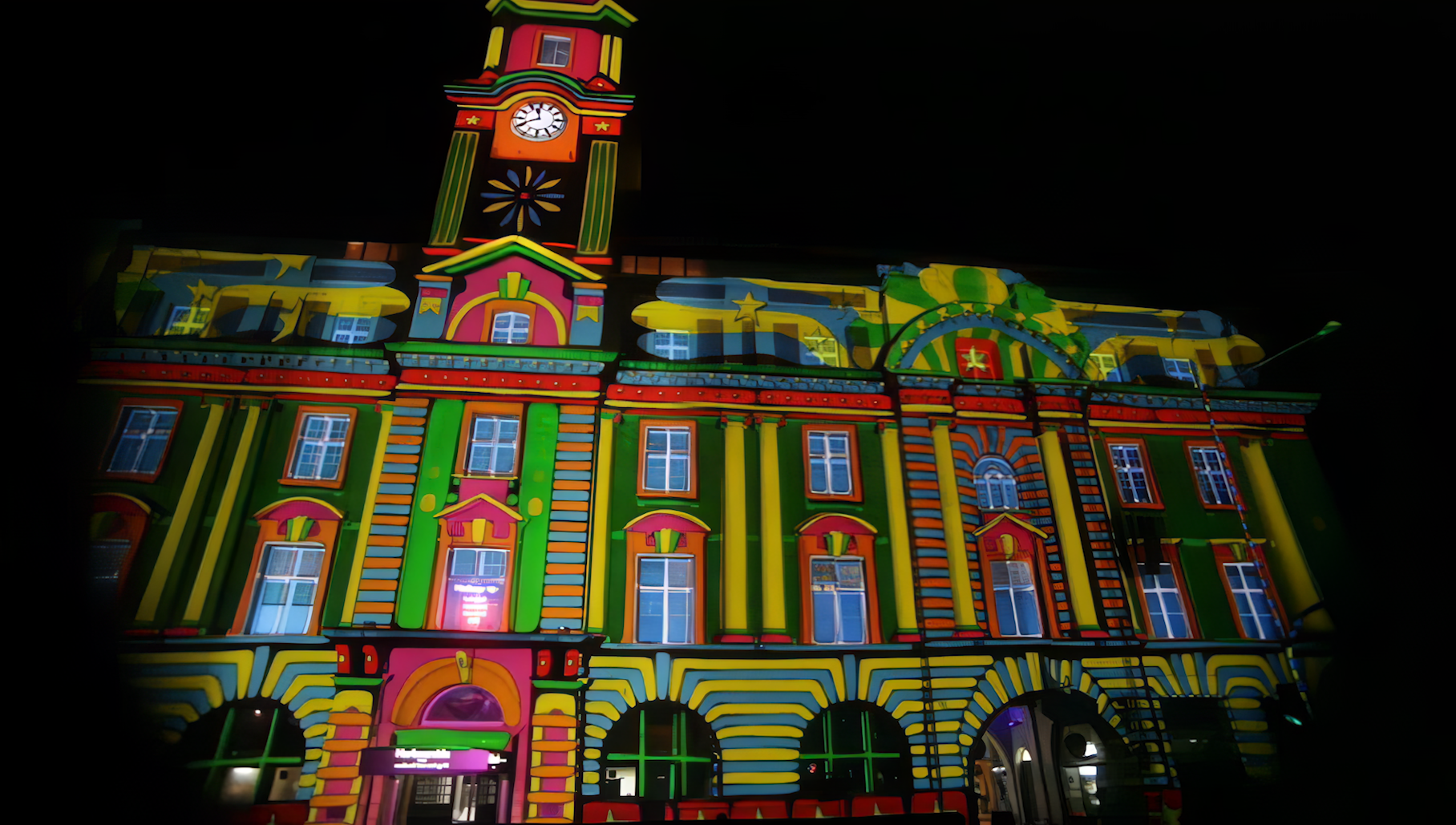
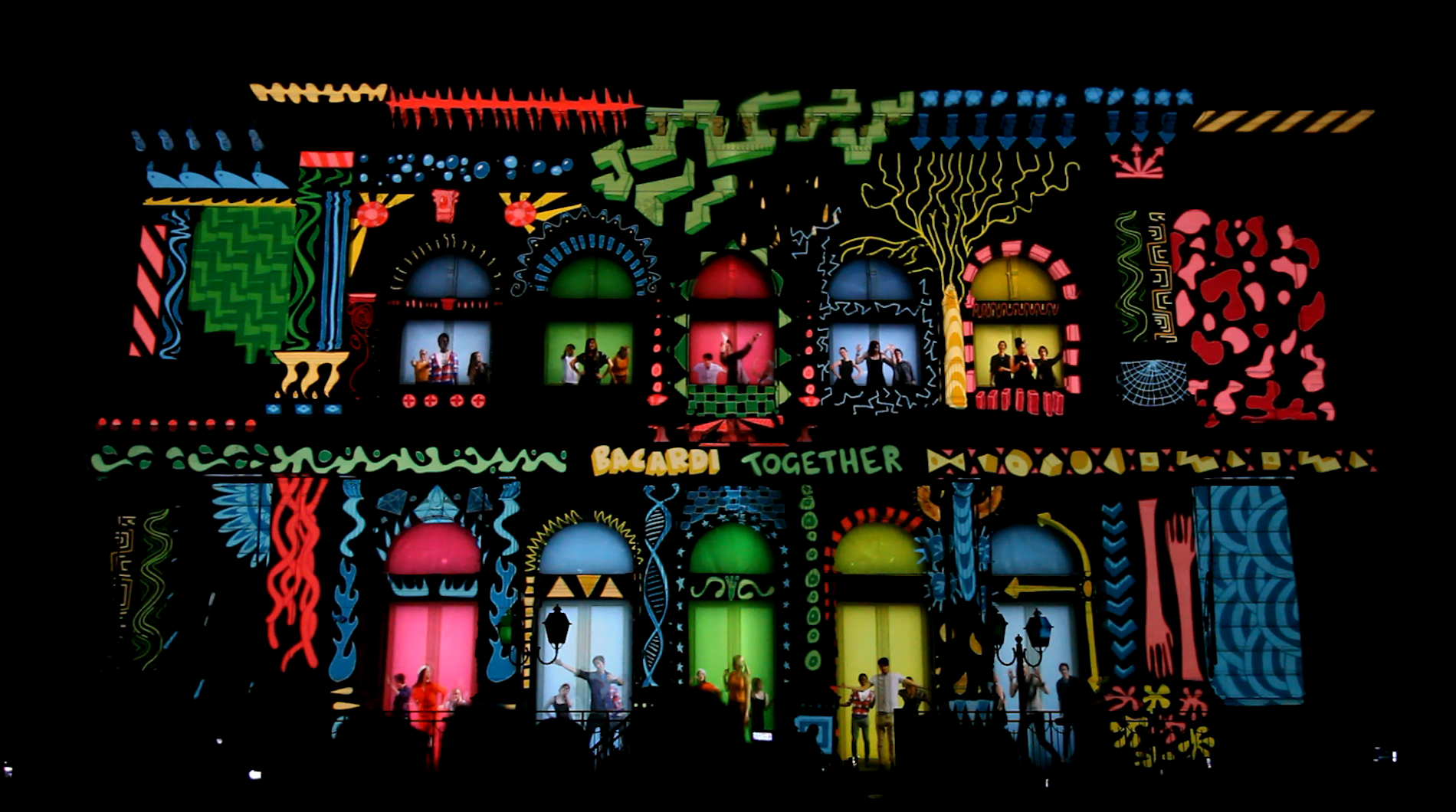
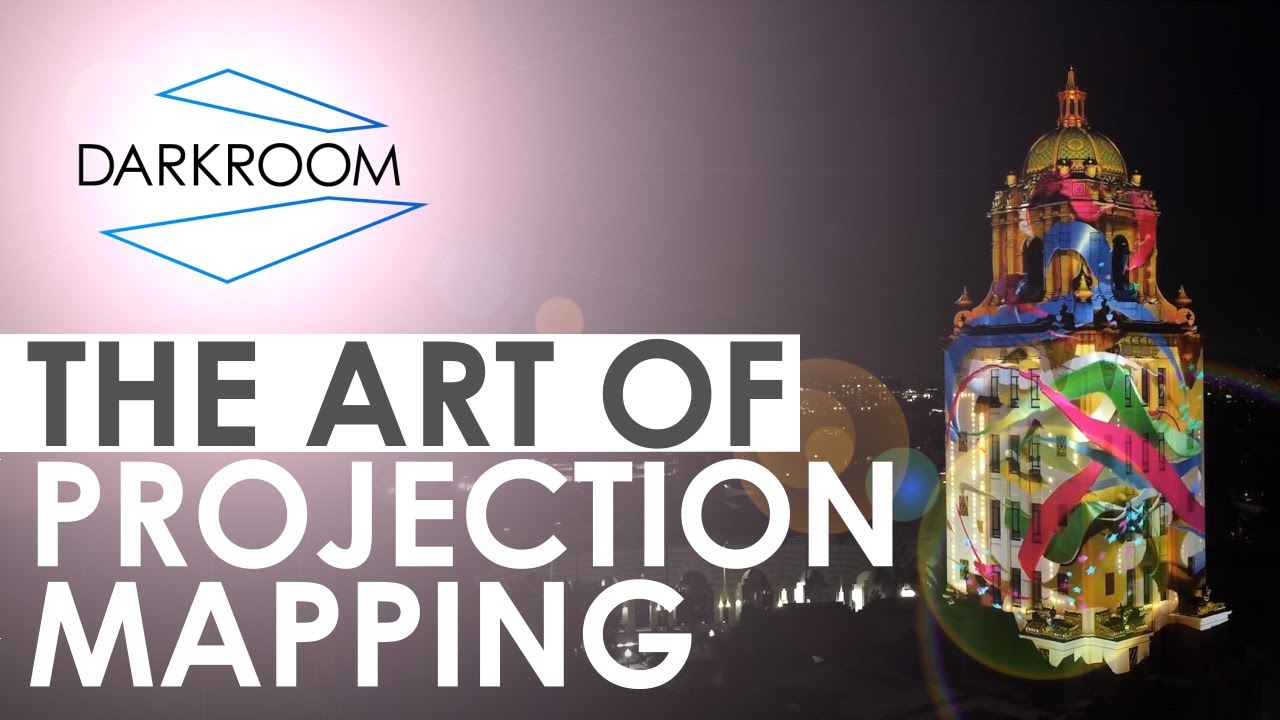
Darkroom has done alot of projection mapping since then, it’s probably what we are best known for. Most of this is projections onto existing buildings, but some are projection mapped bespoke objects. It was one of these jobs a the O2 arena in London for an indian client, Hero motorcycles, that opened the door to designing stages at Sunburn festival.
You have designed the mainstage at Sunburn three times now. This is Asia’s biggest music festival, it must have opened some new doors for you?
Well, we’re very well known in India for stage design, but not so much else elsewhere in the world. It’s interesting how we’ve become known in certain parts of the world for different things. In East Asia it’s luxury brands, in London it’s projection mapping, in Spain we do alot of Fulldome shows. But yes every successful job opens new doors, I guess the great thing for us is that we do more than one thing so there is sort of cross pollination that happens.
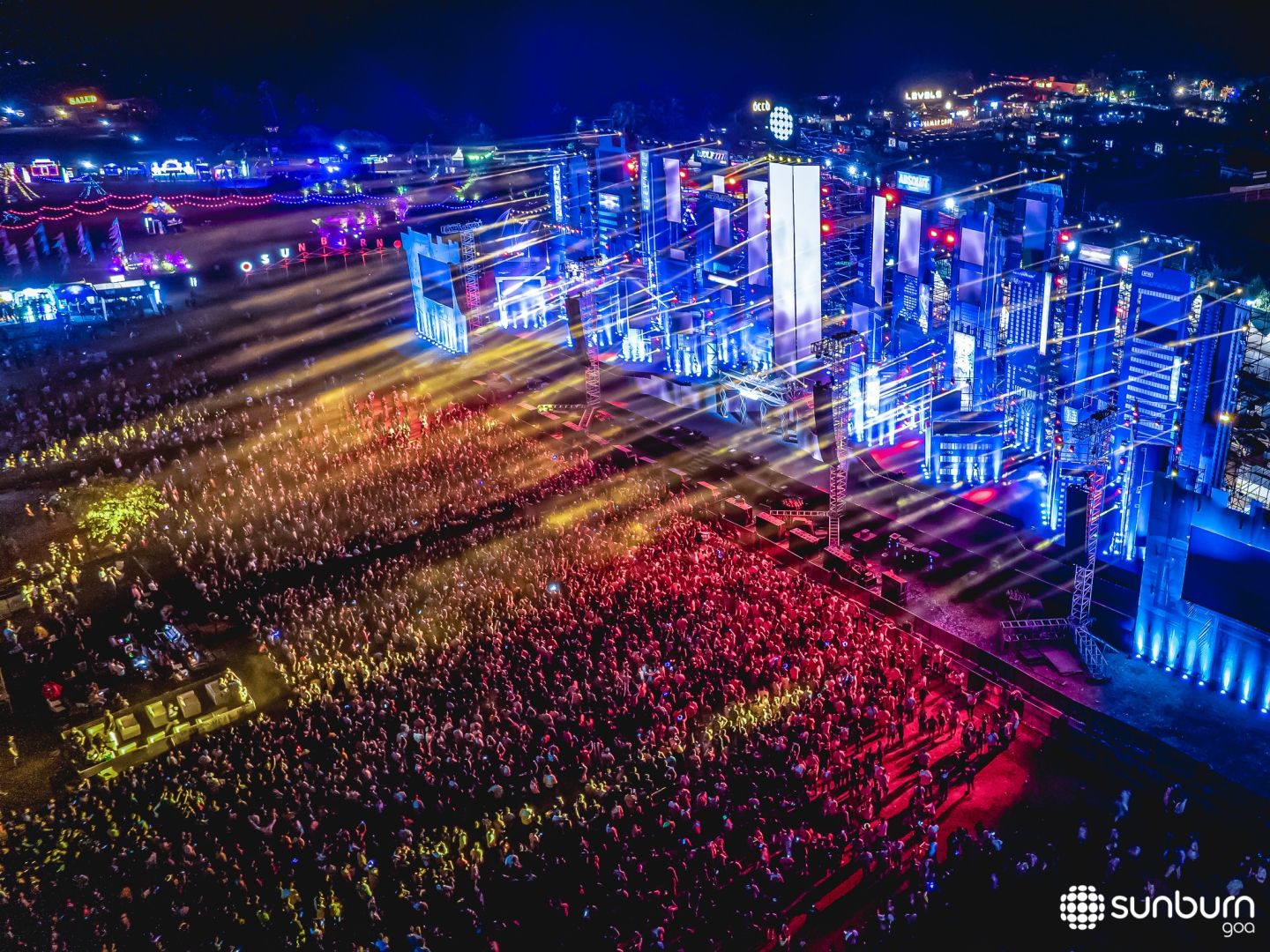
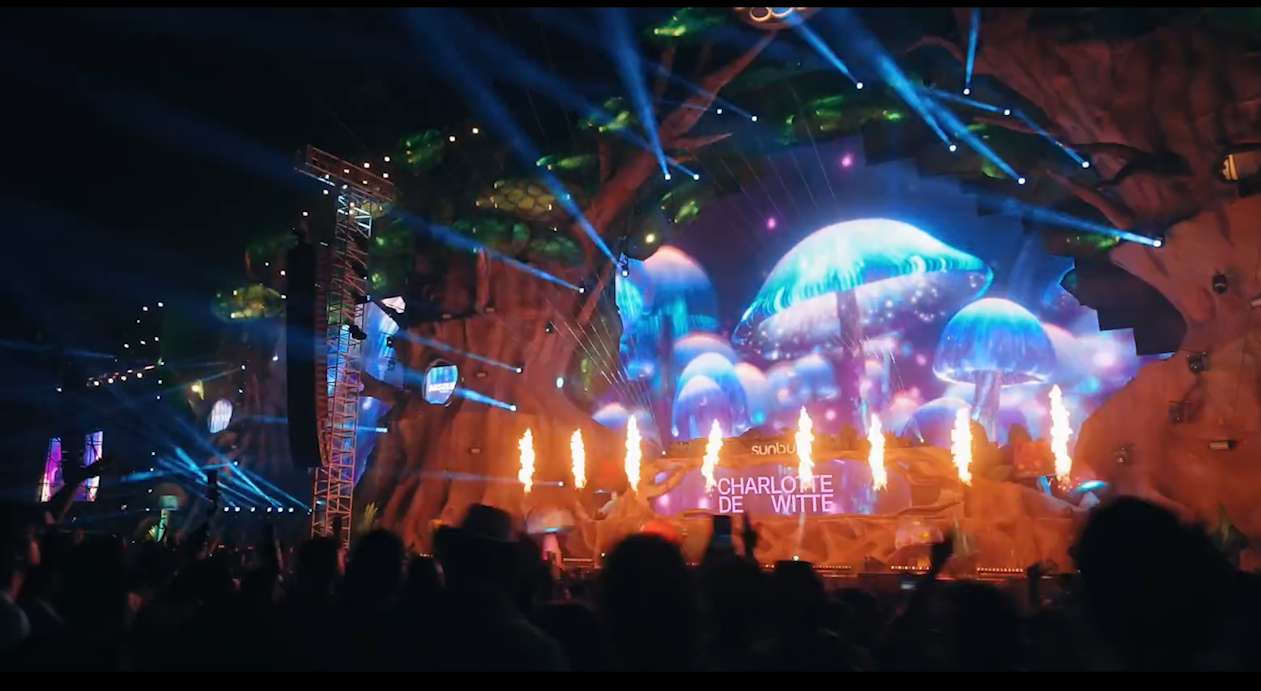
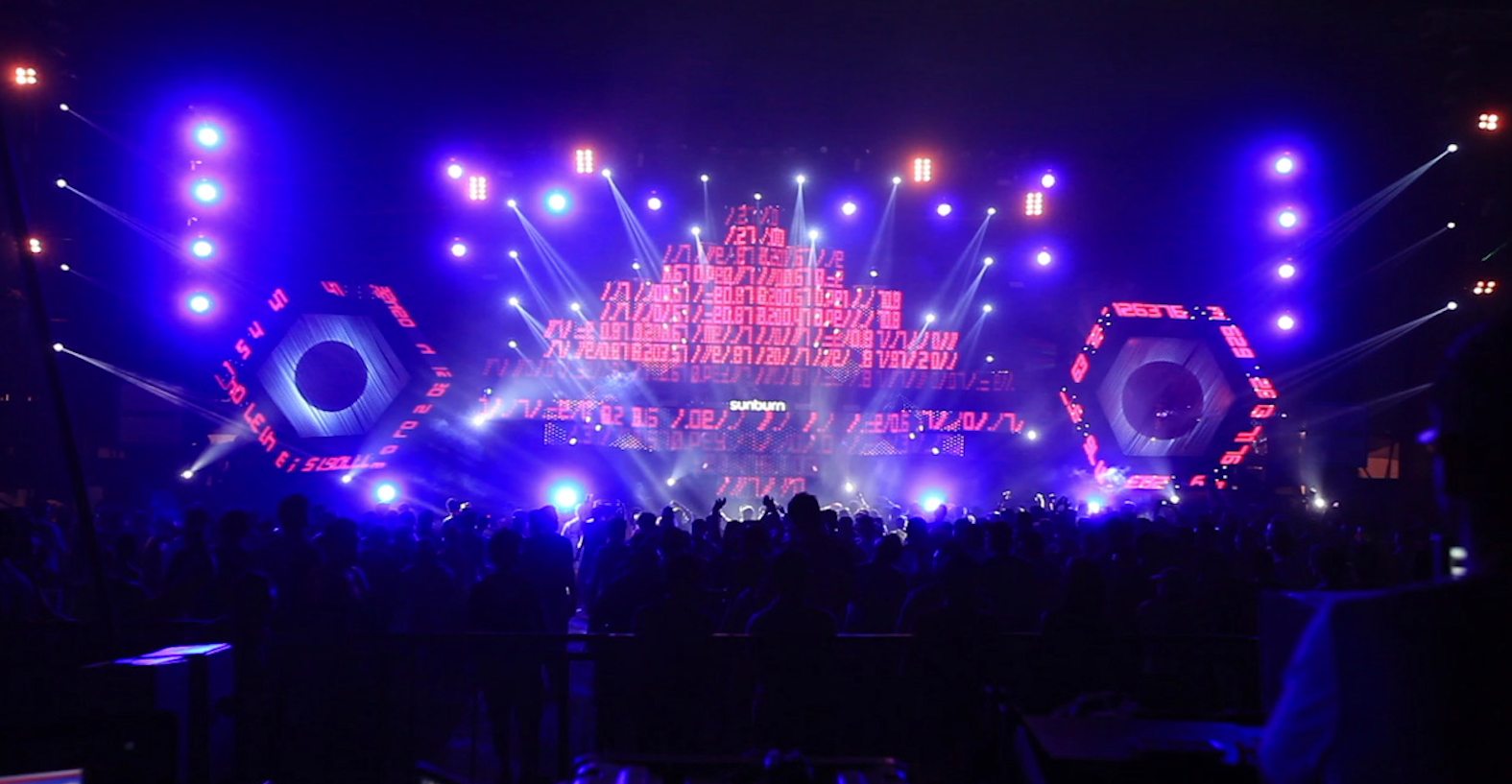

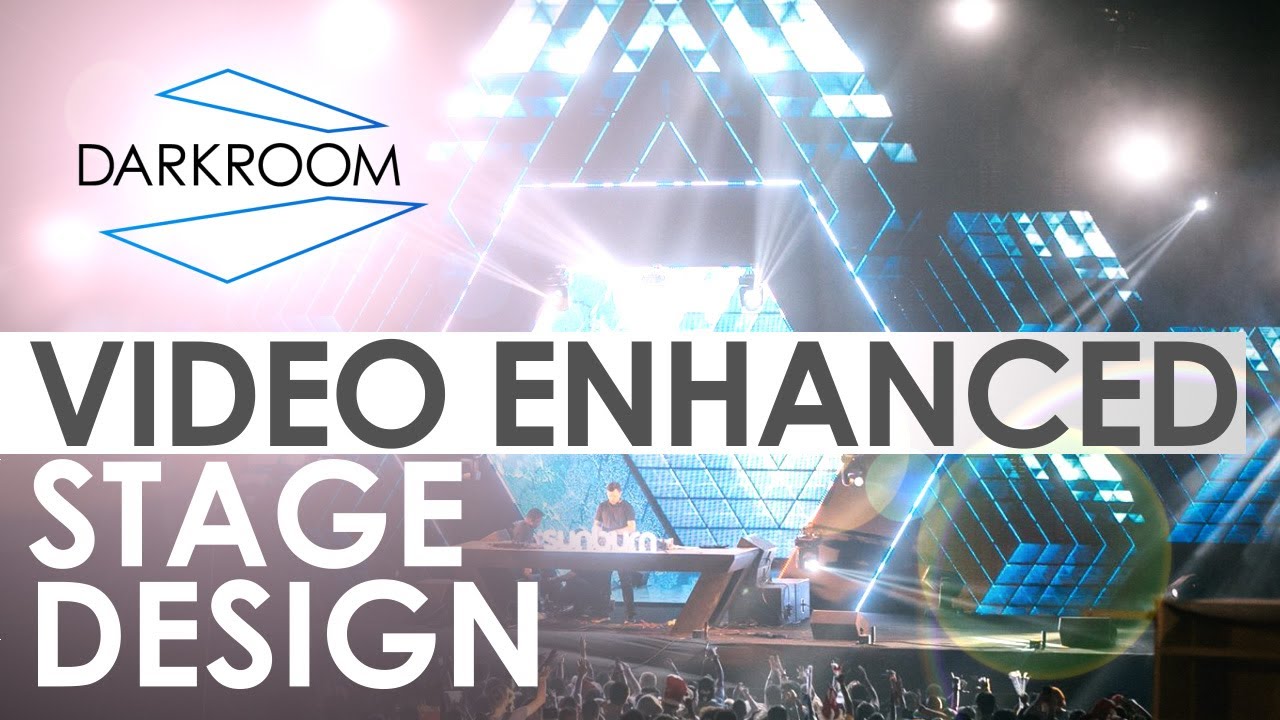
You have done the “Unwrap the Magic” projection mapping show onto the Beverly Hills City Hall for the last two years. Was it difficult to create a follow-up show on the same building, and what were some of the challenges involved?
The first year, we explored a wide range of creative ideas which resulted in an effective and fun but slightly disconnected sequence of looks.It was a bit of a projection mapping hit parade. This year, we decided to take a more conceptual approach. We envisioned the building as a giant pop-up book, which offered a unique and dynamic visual experience. Another idea was to transform the building into a giant elevator, with doors opening to reveal different scenes, controlled interactively by the audience via a kiosk.
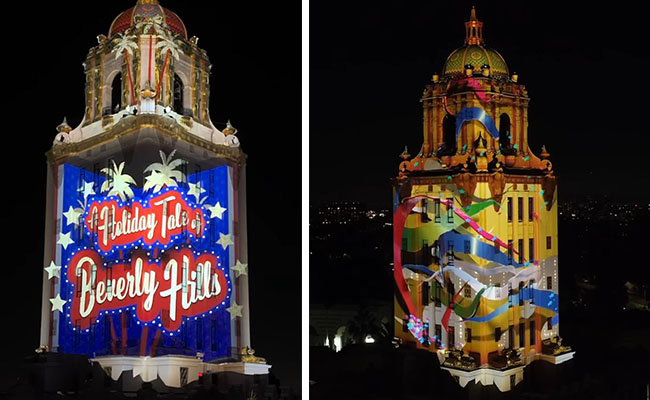
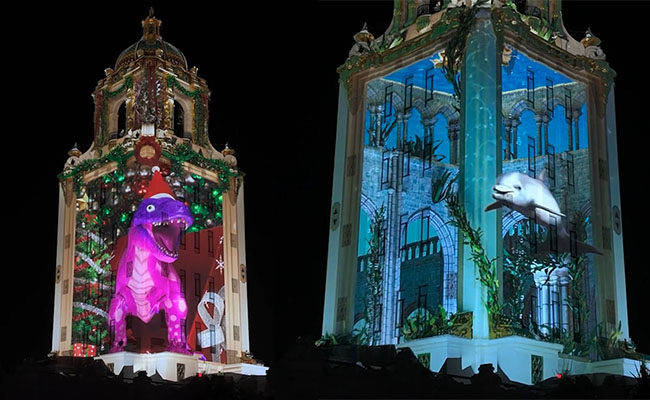
One unexpected challenge was the complexity of creating the pop-up book animations. It required intricate rigging, as the human eye can easily detect when something doesn’t “pop up” naturally, much like the “uncanny valley” effect with digital faces. Fortunately, we had Shaun Madgwick on the job, a talented Cinema 4D animator, who has been with us since the early days but is now freelance. He did an excellent job, even though it took longer than anticipated. Sometimes you just have to dig deep!
What was it like working on the ground in L.A.?
Actually, we never set foot in Los Angeles, the whole job was delivered remotely from New Zealand. The job was run by New Media Creative Studio, a studio from Madrid whom we’ve worked with many many times over the years. And we had the tech team from Screenberry there, who provided the media server. With accurate mapping and a reliable template, we were confident we could deliver a well executed show without having to be on-site.
How do you manage remote projects, and do you still travel much for work?
We’ve been traveling less since COVID, but it seems like that’s starting to pick up again. Being on-site is always beneficial for meeting people, building relationships, and being close to the final work. However, working from New Zealand, with global demand for our services, has pushed us to optimize remote work. The key is having strong, trusted teams. We’re fortunate to have built a network of excellent collaborators worldwide, mainly from our time operating out of London from 2008 to 2013.
Remote work has sharpened our communication skills and streamlined our processes. Often, it allows us to complete tasks more efficiently, with fewer lengthy meetings and discussions. Once we’ve proven we can deliver quality work remotely, it becomes easier to focus on execution. Overcoming the geographical distance has opened up many opportunities for us globally. For companies like ours, exporting creativity from places like New Zealand, it’s an important strategy.
You have had an ongoing working relationship with Japanese superstar artist Takashi Murakami. How did that come about?
I was put together with Murakami when we were both designing for Louis Vuitton in 2004. We literally out in a room together and told to come up with some event visuals for the Louis Vuitton 150th Anniversary party in Tokyo. He was very receptive to the animations I made of his work and arranged for me to collaborate with one of his proteges at the time, Chiho Aoshima. Aoshima and I have since completed a series of 3 video art works since then.
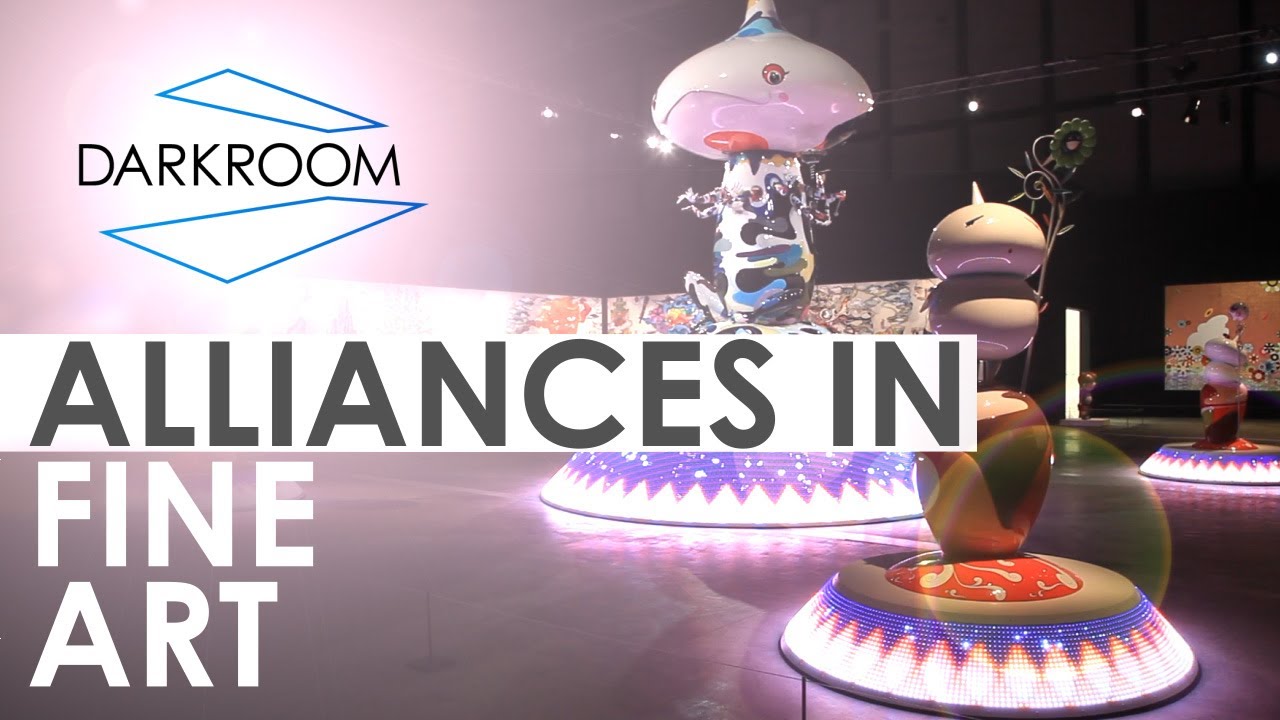
How do you collaborate with technical suppliers, producers, brands, and creatives in the industry?
We have a broad network of top-notch partners worldwide, many of whom we met while working overseas or during projects like the Inflatable Rugby Ball tour in 2008 or the Louis Vuitton 150th anniversary parties in 2004 [both were with NZ events company Inside-Out Projections I might add]. This network includes lighting designers, show control specialists, illustrators, 3D generalists, producers, and staging companies. It’s valuable to maintain these relationships after a project ends, as we often return to the same regions for new work. Not only do we get to work with these familiar professionals, but they can also recommend other local companies that might be useful for our projects.
Do you work with contractors much, or do you do most of your work in-house?
We have a full-time team primarily focused on our ongoing work for Les Mills International, particularly the TRIP. However, we frequently use contractors for other projects. This approach allows us to bring in specific skills and expand our capacity as needed, as we did with the Beverly Hills Projection Mapping job. I believe the industry is moving towards a model where individuals have more control over their professional output. At Darkroom, we see ourselves not only as artists creating visuals for projection mapping, live concerts, and immersive environments but also as curators of creative work for our clients. We actively seek out and incorporate whatever fantastic talent is out there, whenever projects allow.
You create three trips for Les Mills International each year, each 45 minutes long, and have been doing so for ten years. How do you keep the ideas fresh?
Our core TRIP team is Les and Chris from LMI and Grant and me from Darkroom. We’ll have an initial meeting to discuss the upcoming trip. Les always brings new ideas and directions he wants to explore, and then we develop those into a 45-minute class. This project has been creatively rewarding and professionally fulfilling, even after more than thirty trips. The concept of being on a road and constantly moving through different environments changes our approach to motion graphic design. The camera movement plays a significant role, which helps keep the visuals dynamic. It’s all part of creating and editing visuals for Immersive experiences where there is no frame. Our focus is on visual design and making each workout the best experience possible.
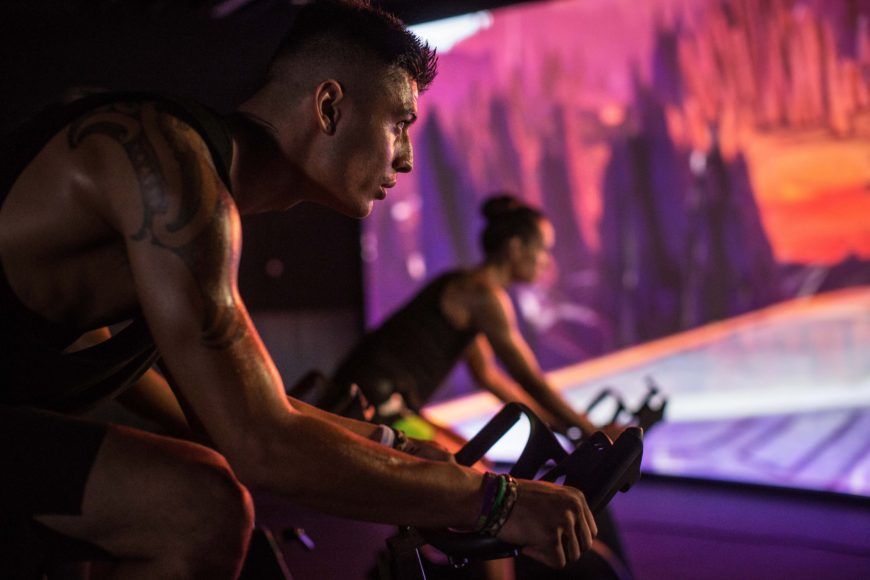
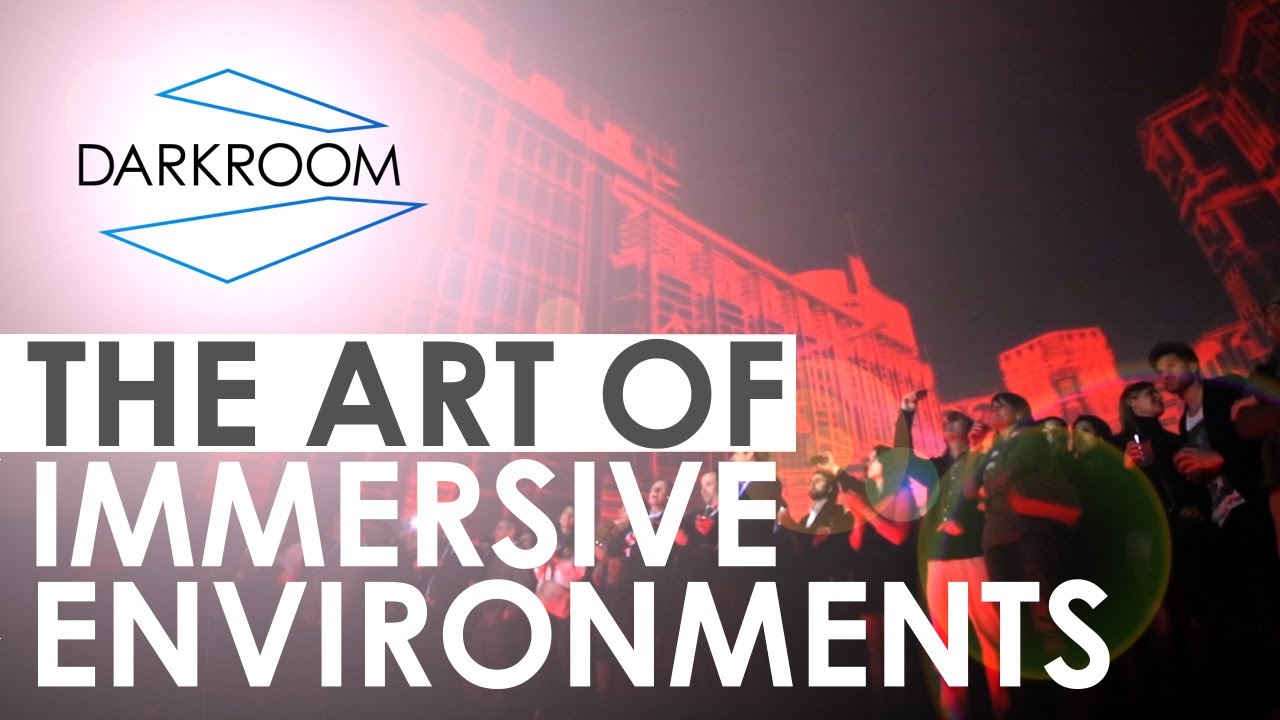
What is in your toolkit, and are there any new technologies you are using, especially regarding AI?
We primarily use Maxon Cinema 4D, Unreal Engine 5, and the Adobe Suite, focusing on Premiere, After Effects, and Photoshop. I’ve been using MidJourney a lot for developing creative concepts. The AI video generation tools like Luma, Kling, Sora and Runway are good at producing fairly random looking final results, but not so much components, yet. Although I did have one early success with this at the end of last year. We were asked by the Louis Vuitton Hong Kong events team to animate some new LV art featuring a hand-drawn coconut palm. Traditionally, making the palm move in the wind would have been quite complex. But I used Runway Gen 2, prompted it to simulate wind moving through the palm, and it delivered exactly what I wanted and potentially saved me days of work. I expect we’ll see more AI features incorporated into our software tools that will actually be useful in the production of moving image, rather than just the fun toys that we are seeing now.
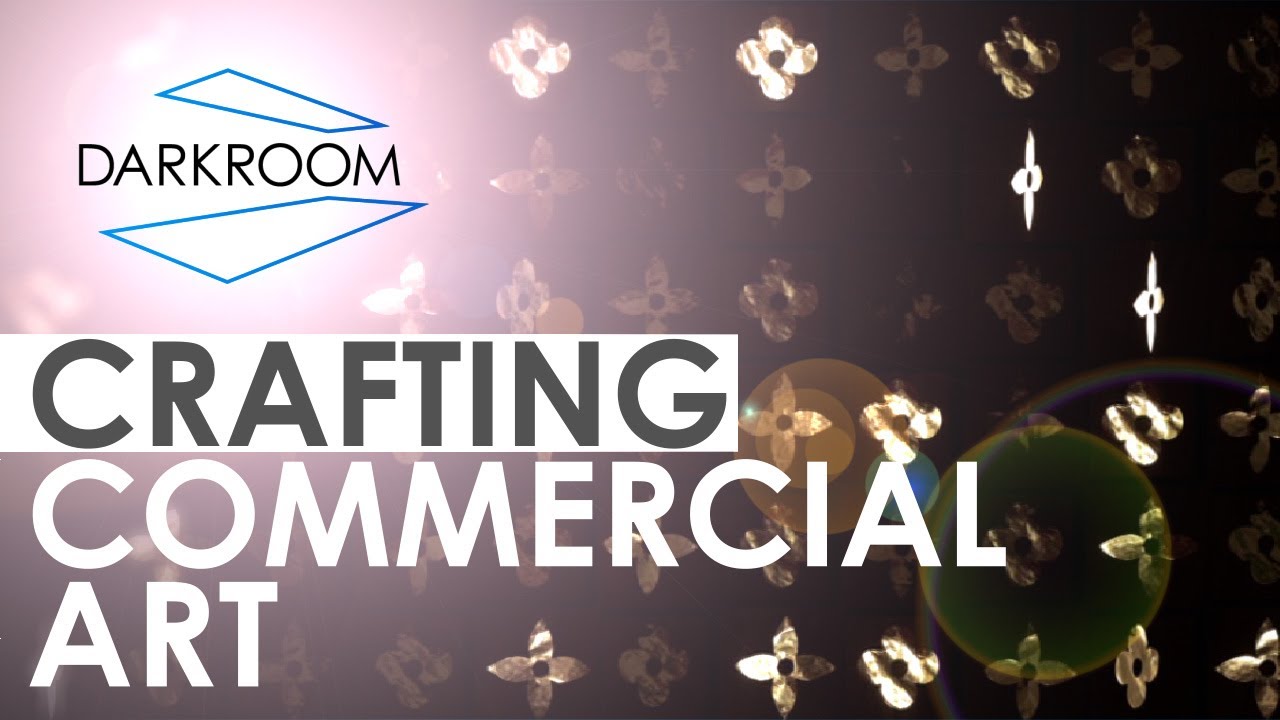
How do you decide on which jobs to take on?
Emma [my business partner]and I use a three-question test to evaluate potential projects. First, we ask how challenging the project is, as challenging projects can help our studio grow in skill. Second, we consider how well-publicized the project will be, since high visibility can enhance our studio’s reputation. Finally, we look at how well-paid the project is, as more profitable work supports our studio’s growth. We find these criteria help us make worthwhile decisions.
How do you measure the success of a project, both creatively and commercially?
Is it a project we’re all proud of? Did we enjoy working on it? Was it delivered on time and within budget? Does it further our reputation for creating excellent work?
What advice would you give to aspiring motion graphics artists looking to work on large-scale projects?
Don’t be intimidated by the scale of the project. There will always be people to support you as your work expands. Remember, your main job is to draw from your creative well, so keep nurturing that. Take care of yourself and stay inspired.
The post Creative Talk with Bruce Ferguson appeared first on stoppress.co.nz.
More Stories
Around the World: AI & Christmas, a Temu crackdown and Aussie influencers
Here’s a Short Roundup for This Week
Melanie Spencer a finalist in Campaign’s Agency of the Year Awards